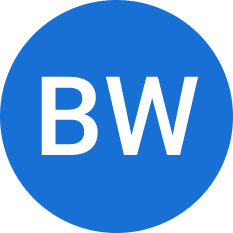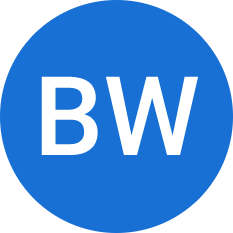How long can a skyscraper last without a solid foundation? Not long before crumbling under its weight.
Similarly, a robust knowledge management framework is needed to support your efforts and ensure long-term success in knowledge management.
It provides a structured approach to capturing, organizing, sharing, and utilizing your organization’s collective knowledge. It acts as a blueprint to guide your knowledge initiatives and ensure they align with your overall business goals.
In this blog, we’ll explore the concept of a knowledge management framework, its key benefits and components, and discuss how to implement one effectively.
What Is a Knowledge Management Framework?
A knowledge management framework is a structured approach to capturing, organizing, storing, sharing, and utilizing an organization’s collective knowledge. It provides a roadmap for creating, managing, and leveraging knowledge assets to achieve strategic goals.
A well-defined framework encompasses various components, including people, processes, technology, and content. It helps outline how knowledge is identified, captured, stored, shared, and utilized within an organization. It also defines roles and responsibilities, establishes guidelines for knowledge management practices, and sets metrics for measuring success.
For example, a customer service department seeking to improve efficiency and customer satisfaction might implement a knowledge management framework. This framework would involve identifying knowledgeable agents as “knowledge champions,” responsible for documenting best practices and solutions in a centralized knowledge base.
What Makes a Knowledge Management Framework So Effective?
A knowledge management methodology framework is effective because it establishes a structured, systematic approach to capturing, organizing, and distributing organizational knowledge.
Its unique strength is seamlessly integrating people, processes, and technology, enabling consistent knowledge flow across teams and departments.
By aligning knowledge management practices with business goals, the framework ensures that knowledge assets are accessible, reliable, and actionable. This adaptability and scalability make it a cornerstone for organizations looking to optimize workflows, improve innovation, and maintain a competitive edge in dynamic markets.
What Are the Benefits of Adapting a Knowledge Management Framework?
A well-defined knowledge management framework is the backbone of successful knowledge management initiatives. Here are some of its important benefits:
Enhanced Decision-Making
A knowledge management framework ensures the correct information reaches the right people at the right time.
Easy access to relevant knowledge, data, and expertise empowers employees to make informed decisions quickly and confidently. This leads to better strategic choices, reduced errors, and improved operational efficiency.
Increased Efficiency & Productivity
Imagine a workplace where employees spend less time searching for information and more time focusing on their core tasks.
A knowledge management framework streamlines knowledge access and sharing, eliminating information silos and reducing time wasted on redundant efforts. This translates to increased productivity, faster turnaround times, and improved efficiency.
Better Innovation & Creativity
A knowledge management framework fosters a culture of team collaboration and knowledge sharing. It provides a platform for employees to exchange ideas, learn from each other’s experiences, and build upon existing knowledge, creating a fertile ground for innovation.
This leads to the generation of new ideas, improved processes, and a more agile and adaptive organization.
Streamlined Customer Service
Today’s customer-centric world demands exceptional service is paramount. A knowledge management framework equips customer-facing teams with the latest information, best practices, and solutions to common queries.
This empowers them to provide quick, accurate, consistent support, increasing customer satisfaction and loyalty.
Minimized Costs
A knowledge management framework can lead to significant cost savings by improving efficiency, reducing errors, and streamlining processes.
This can include reduced support costs, lower training expenses, and minimized operational inefficiencies.
Richer Employee Engagement
A knowledge management framework promotes employee involvement in knowledge creation and sharing. Recognizing and valuing their contributions fosters a sense of ownership and engagement.
This leads to a more motivated and invested workforce, contributing to a positive work environment and improved employee retention.
Improved Competitiveness
In today’s dynamic market, knowledge is a key differentiator. A knowledge management framework enables organizations to leverage their collective intelligence, adapt to changing conditions, and innovate faster than their competitors.
This leads to a stronger market position and sustainable growth.
Optimized Risk Management
Effective knowledge management strategy framework helps organizations identify and mitigate risks by providing access to relevant information, best practices, and lessons learned.
This allows for proactive risk assessment, informed decision-making, and improved regulation compliance.
What Are the Components of a Knowledge Management Framework?
A knowledge management framework consists of key components that work together to capture, organize, and share knowledge effectively within an organization. Here are those:
People: Putting the Right Players in the Right Places
Knowledge management thrives on collaboration. It involves identifying key stakeholders—leaders, knowledge managers, and contributors—who create, share, and utilize knowledge. This includes:
- Knowledge Managers: Professionals to oversee the overall knowledge management strategy and ensure its alignment with business goals.
- Content Creators: Individuals with expertise in specific areas who create and contribute knowledge assets.
- Editors & Reviewers: Individuals accountable for the content’s overall quality, accuracy, and consistency.
- Knowledge Users: Employees who access and utilize the knowledge within the system to perform their tasks and make informed decisions.
- Process: Optimizing the Flow of Information
Processes form the backbone of a knowledge framework, ensuring that information is captured, stored, and retrieved efficiently. This involves establishing clear procedures for:
- Knowledge Identification: For identifying valuable knowledge assets within the organization.
- Knowledge Capture: For capturing knowledge in various formats, such as documents, articles, videos, and FAQs.
- Knowledge Organization: For structuring and categorizing knowledge for easy retrieval and access.
- Knowledge Sharing: For disseminating knowledge through various channels, such as a knowledge base, intranet, or training sessions.
- Knowledge Utilization: For encouraging employees to apply knowledge in their daily work and decision-making.
Choosing the Right Knowledge Management Tool
Knowledge management software provides the tools and technology to implement your framework effectively. It helps capture, store, organize, and share knowledge. Consider factors such as:
- Ease of use: Select a user-friendly platform that encourages adoption and participation.
- Scalability: Go for a tool that can grow with your organization’s needs and accommodate increasing volumes of knowledge.
- Integration capabilities: Ensure the tool integrates seamlessly with your existing business systems and workflows.
- Security features: Prioritize tools that offer robust security measures to protect your valuable knowledge assets.
- Strategy: Bringing It All Together
A well-defined strategy aligns the people, processes, and tools with organizational goals. It involves:
- Defining clear goals & objectives: What do you aim to achieve with your knowledge management initiatives?
- Aligning with business strategy: How does knowledge management support your organization’s strategic goals?
- Establishing metrics for success: How will you measure the effectiveness of your knowledge management framework?
- Promoting a knowledge-sharing culture: How will you encourage employee participation and knowledge-sharing?
FREE. All Features. FOREVER!
Try our Forever FREE account with all premium features!
Set a Strong Foundation With a Knowledge Management Framework
A knowledge management framework is the cornerstone of effectively organizing and leveraging an organization’s intellectual assets. It integrates people, processes, tools, and strategies to ensure that knowledge is captured, shared, and used effectively, fostering a culture of learning and innovation.
By adopting such a framework, businesses can streamline operations, make informed decisions, and enhance team collaboration. Each component is critical in creating a system that aligns knowledge management with organizational goals, improving efficiency and adaptability in today’s fast-paced environments.
ProProfs Knowledge Base helps organizations build a solid foundation for their knowledge management framework. From intuitive content creation tools to advanced analytics, version control, and collaboration features, ProProfs makes managing knowledge effortless. You can explore the tool more or request a demo below.
 Tips
Tips
We’d love to hear your tips & suggestions on this article!
FREE. All Features. FOREVER!
Try our Forever FREE account with all premium features!

 We'd love your feedback!
We'd love your feedback! Thanks for your feedback!
Thanks for your feedback!







